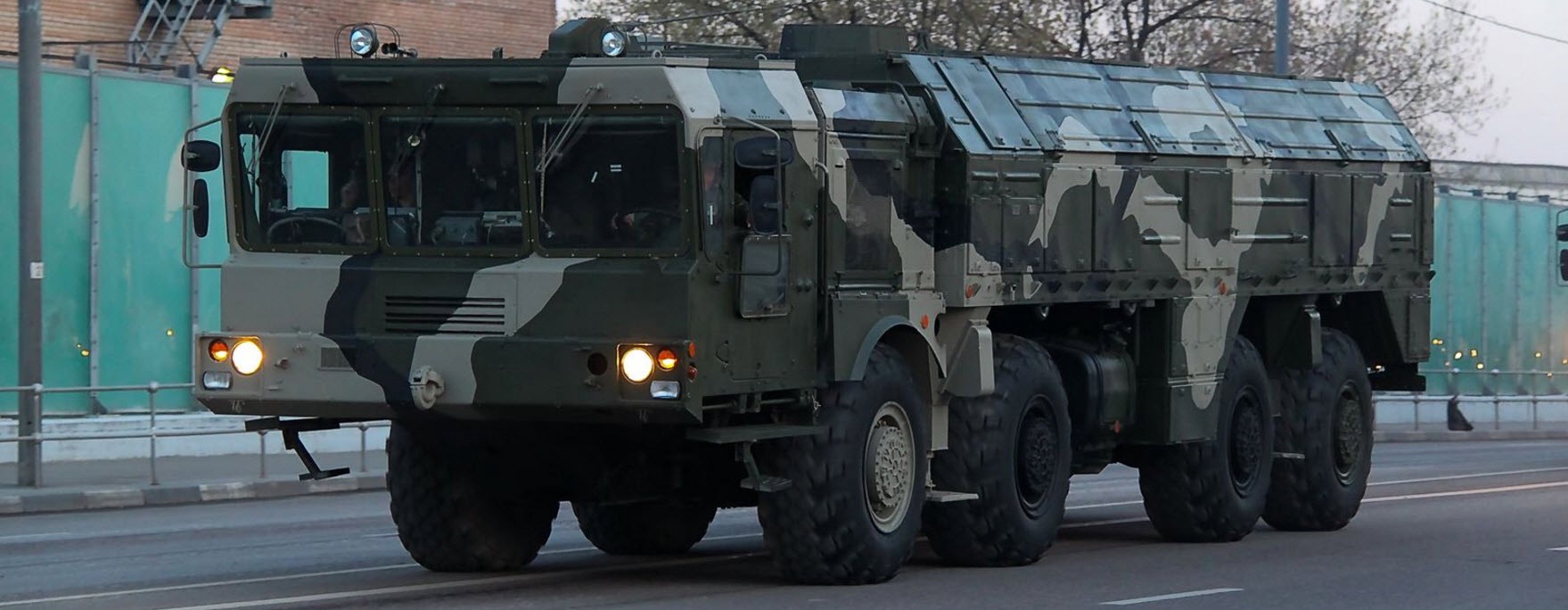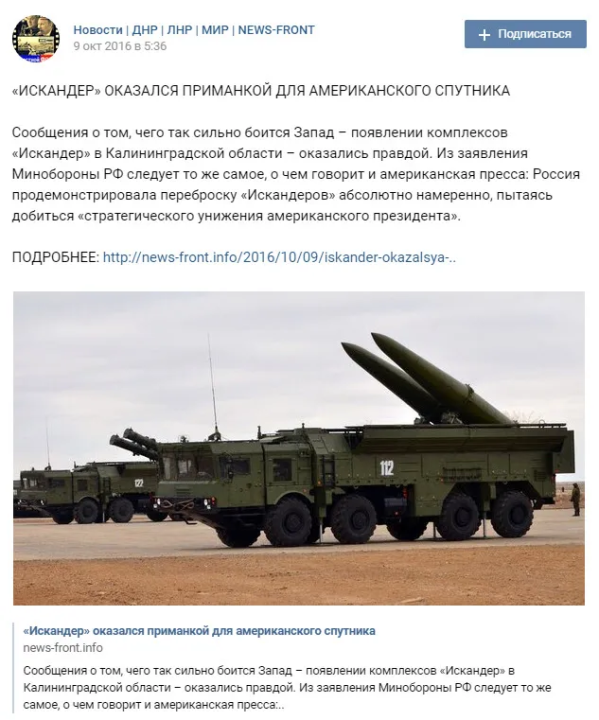The Iskanders Have Landed
From Troubled Waters to Deployed Missiles
The Iskanders Have Landed
Share this story
THE FOCUS

BANNER: A Russian Iskander-M mobile theater ballistic missile system (NATO reporting name: SS-26 Stone). This file is licensed under the Creative Commons Attribution-Share Alike 3.0 Unported license. Photograph taken by Vitaliy Ragulin (source)
This is Part 2 of the @DFRLab investigation into the shipment of Russian Iskander missiles to Kaliningrad. Read Part 1 here.
On October 8th, the Russian Ministry of Defense confirmed that it had shipped Iskanders to Kaliningrad, arguing that the move was part of the regular cycle of military preparedness. This appears to place the move in the context of earlier temporary deployments, as we have already noted.
The move was greeted with anger in Lithuania and Poland, with Polish Foreign Minister Antoni Macierewicz reported as saying that the deployment was of “highest concern”, and his Lithuanian counterpart, Linas Linkevicius, saying that it “ possibly violates international treaties which limit deployment of ballistic missiles of range of over 500 kilometres.”
At the same time, the MoD appeared to play down the significance of the move. Ministry spokesman General Igor Konashenkov commented that the “authors of this hype ought to know that the ‘Iskander’ operational-tactical missile complex is mobile”, saying that Russia had not “made a secret” of the deployment.
He went on to emphasize the routine nature of the deployment: “In the framework of military readiness, units of the missile forces conduct mobility training throughout the year, covering significant distances within the Russian Federation in different ways: by air and sea, and under their own propulsion.”
Konashenkov also claimed that the Russian forces had deliberately exposed one of the Iskanders while an American surveillance satellite flew over “to define the working parameters of this space equipment”, concluding, “We did not have to wait long: our American partners themselves confirmed it all to us in a revelatory burst.”
The MoD did not disclose where the missiles would be located, but did say they would be moved around the enclave for training.
Russian social media welcomed the MoD comments with glee. Many social media commentators praised the military for out-smarting the US, such as this post from News-Front, an outlet linked to the Russian-backed rebels in Ukraine:

“Iskander” turned out to be bait for an American satellite. Reports about what the West fears the most — Iskander missile systems in Kaliningrad — turned out to be true. Comments from the Russian MoD are in line with the reports from the Western press: Russia transported Iskanders to Kaliningrad with confidence, in an attempt to achieve a ‘strategic humiliation’ of the American president.”
This post, from an account called “USA — sponsor of global terror”, focused its scorn on Latvia, which on Friday announced an increase in its alert level:

“The Latvian army was put on high alert for a couple of Iskanders. The Baltic states are scared, but still asking for it. How many times did the Russian MoD concede to the Baltic States, leaving Kalinigrad without the presence of tactical missile systems? They were always scared of Iskanders, still are.”
The Kremlin’s propaganda outlet, Sputnik, also linked Latvia’s increase in readiness to the Iskander deployment:

In fact, Latvia had announced its increase in readiness on Friday, before reports of the Iskander deployment surfaced. A press release (in Latvian) listed a number of Russian military actions that week, including a special-forces exercise in Belarus and Russia, the deployment of a number of MiG-29s to Kaliningrad from Kursk, exercises including Iskanders in Ivanovo (112th tactical missile brigade) and Luga (26th tactical missile brigade), and the identification of three Russian aircraft near Latvia’s airspace.
“In the context of the above-mentioned incidents, personnel in the National Armed Forces have been notified, and surveillance of the state’s land and sea borders and airspace is being reinforced,” the press release said.
Analysis
Four things stand out from the above reactions and coverage. First, the deployment appears to be another temporary move, such as has been seen in the past. As such, while it caused a significant spike in tension on Friday and Saturday, it does not appear to mark a permanent escalation.
Second, the Russian MoD appears to have been keen to limit the rise in tensions. The explanation that this was a routine movement, the victim of “hype” caused by ill-informed journalists, seems designed to limit the fallout from the move, rather than exacerbating it (as would have been the case if, for example, the MoD had said that the move was permanent and placed the blame on NATO).
Third, the claim that one Iskander was spotted by a U.S. satellite appears to come solely from the Russian MoD. The initial news of the deployment on Friday was broken by the Estonian broadcaster ERR, which cited unnamed government sources, and confirmed to Reuters by an unnamed U.S. intelligence official. Follow-up reporting on Saturday named Konashenkov as the source of the satellite allegation. This is therefore a claim which rests on only one source of doubtful reliability (many of Konashenkov’s previous claims have been exposed as lies, such as its statements on the Syrian aid convoy and MH17).
Fourth, if Konashenkov is speaking the truth, the MoD’s decision to expose its own “successful trick” is striking. Using an exposed weapons system as bait to discover the capabilities of another country’s surveillance system is a wholly credible ploy; what is less clear is why it was then necessary to reveal the trick (rather than, for example, keeping it quiet so that it could be used again).
There are two possible explanations. One is that this was an attempt to inject doubt, and therefore delay, into the U.S. intelligence community’s decision-making process by saying, in effect, “Haha, we tricked you, so think about that next time”.
The second is that the Iskander which was reportedly spotted by a U.S. satellite was indeed left exposed by mistake, and Konashenkov was trying to cover up the fact and lower the diplomatic heat by claiming that it was deliberate.
For the future, it will be important to note whether Russian officials announce the departure of the Iskanders from Kaliningrad at the end of the “training”, as they have in the past. This will give a further indication of whether Russia wishes to manage the tensions in the eastern Baltic, or worsen them.

